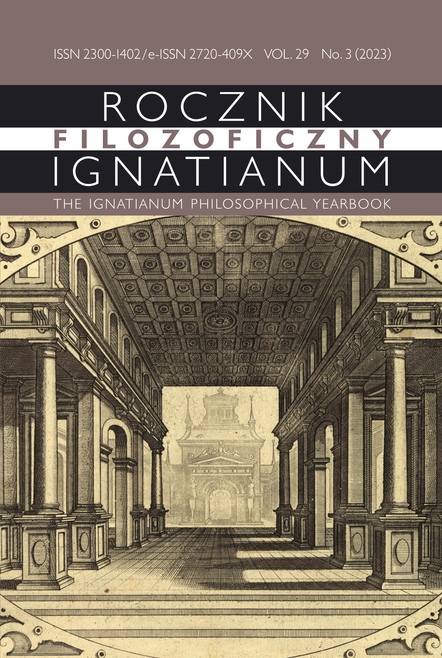The Beauty in Structure Based on the Findings of the Excavations at the Wrocław Tenaille Bastion (mid-16th century)
Abstract
The article aims to analyze changes in the perception of military objects along with their historical development and attempts to answer the question of the possibilities of analyzing such objects in the context of architectural beauty. The pretext for asking these questions was the author’s archaeological excavations in one of the earliest modern fortifications in Europe, namely the Tenaille Bastion in Wrocław. In order to answer these questions, medieval defensive structures were analyzed in terms of beauty and symbolism, taking into account the change in their role over time. Subsequently, the Tenaille Bastion was subjected to a similar analysis as an example of a modern fortification. The result of these efforts was to demonstrate that considering modern military objects in the context of architectural beauty is possible but significantly more challenging, requiring the application of different concepts of beauty.
References
Dietzsch Steffen, „Antropologiczna granica piękna. Dwanaście tez”, w: Przyszłość kultury: od diagnozy do prognozy, red. Alicja Kisielewska, Andrzej Kisielewski, Monika Kostaszuk-Romanowska (Białystok: Prymat, 2017), 87–98. Dziemidok Bohdan, Główne kontrowersje estetyki współczesnej (Warszawa: PWN, 2006).
Kleszcz Justyna, Biopolis. Wizja miasta nieantropocentrycznego (Zielona Góra: Oficyna Wydawnicza Uniwersytetu Zielonogórskiego, 2020).
Małachowicz Edmund, „Bastejowe fortyfikacje Wrocławia”, w: Bastejowe fortyfikacje w Polsce, red. Marian Kloza (Wrocław: Wydawnictwo Politechniki Wrocławskiej, 1975).
Omieciński Tomasz, Teorie piękna we współczesnych nurtach architektonicznych, praca doktorska pod kierunkiem dr hab. Artura Zaguły, prof. PŁ (Łódź: Politechnika Łódzka, 2021).
Salingaros Nikos A., A Theory of Architecture (Solingen: Umbau-Verlag, 2006). Sokół Teresa, „Brama Mikołajska − funkcja i symbolika” w: Przedmieście Mikołajskie we Wrocławiu, red. Halina Okólska (Wrocław: Gajt, 2011), 45–51.
Tatarkiewicz Władysław, Dzieje sześciu pojęć (Warszawa: PWN, 2005).
Dantho Arthur Coleman, „The Artworld”, Journal of Philosophy XV (1964): 571–584.
Eckert Wojciech, „System obronny Ośna Lubuskiego. Piękno do odkrycia”, Czasopismo Techniczne. Architektura 1-a (2009): 235–238.
Goliński Mateusz, „Fortyfikacje miejskie Wrocławia XIII–XIV w.”, Studia i Materiały do Historii Wojskowości 29 (1986): 23–41.
Kazimierska-Jerzyk Wioletta, „O pięknie, które zdarza się bardzo rzadko”, Principia XLI–XLII (2005): 261–277.
Kijewska Władka, „Zniesławiony ornament”, Rzut 7 (2015): 30–38.
Kleszcz Justyna, Kmiecik Piotr, „Sposób prowadzenia badań archeologiczno-architektonicznych a możliwości wykorzystania ich wyników w procesie projektowym na przykładzie byłego Szpitala im. Babińskiego we Wrocławiu”, Budownictwo i Architektura 17 (2018): 169–175. DOI: 10.24358/ Bud-Arch_18_171_20.
Kmiecik Piotr, Szwed Robert, „The second left-bank castle in Wrocław in the light of the latest archaeological and architectural research”, Archaeologia Historica Polona 29 (2022): 43–67. DOI: https://doi.org/10.12775/AHP.2021.004.
Michalski Mateusz, Babral Karolina, Wiatrzyk Karolina, „Studium rekonstrukcji bastejowych fortyfikacji Wrocławia”, Architectus 3 (2014): 11–21. DOI: 10.5277/arc140302.
Napiórkowski Marcin, „Nie to ładne, co ładne…”, Rzut 7 (2015): 4–7. Przyłęcki Mirosław, „Ewolucja i modernizacja fortyfikacji na Śląsku od XIII do XVII w.”, Ochrona Zabytków 46, (1993) 4: 295–304.
Przyłęcki Mirosław, „Trwałe ruiny historycznych obiektów w krajobrazie miast”, Architektura krajobrazu 3 (2007): 25–34.
Rosenfeld-Kowalska Izabela, „Moda w świetle instytucjonalnej koncepcji sztuki”, Powidoki 1 (2019): 70–74.
Weiner Berthold, „Contrafactur der Stadt Breslau.1562” (Breslau: Grass, Barth & Comp. W. Friedrich, 1929), https://www.bibliotekacyfrowa.pl/dlibra/pub- lication/36165/edition/39530 (accessed on 2nd June 2023).
Copyright (c) 2023 Jesuit University Ignatianum in Krakow

This work is licensed under a Creative Commons Attribution-NoDerivatives 4.0 International License.
The Yearbook only accepts materials for publication that are free of all conflicts of interest, and that in no way involve conflicts over authorship, copyright, etc. The Editors will take action against any cases of plagiarizing, ghostwriting1, guest/honorary authorship2, etc. Where co-authored work is concerned, the Author listed first is expected to take responsibility for the submission, and is required to make clear the contributions of all of the Co-Authors involved. In the event of the publication owing its existence to funding dedicated to this purpose, this fact should be made clear: e.g. in any note of thanks/acknowledgement, or in a footnote, etc. Explicit notification should be given of any form of reprinting, with the appropriate evidence of permission to publish being furnished as required. Any impropriety on the part of Authors/Reviewers risks exposing them to appropriate responses from the relevant institutions.
______
1 This term refers to instances of a person who has made an essential contribution being omitted from the list of authors, or from notes conveying gratitude and/or acknowledgement.
2 This occurs when a person who has made either an insignificant contribution or no contribution at all nevertheless appears on the list of authors.





